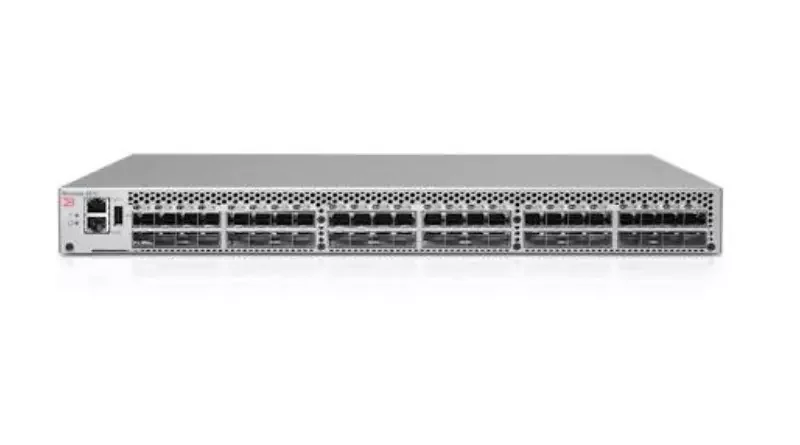Brocade SAN Switch | Setting up Brocade SAN Switch
What is Brocade SAN switch?
Brocade SAN switch is a type of network switch used in Storage Area Networks (SANs) for connecting storage devices and servers. It provides high-speed data transfer and is designed to handle the demanding requirements of a storage infrastructure. Check online now for the refurbished Brocade SAN Switch Price in UAE.
How do I set up a new Brocade SAN switch?
Setting up a new Brocade SAN switch involves the following steps:
- Physical installation: Rack mount the switch and connect power, Ethernet management port, and fiber channel cables.
- Initial configuration: Access the switch through the management port using a terminal or web browser and configure basic network settings such as IP address, subnet mask, and default gateway.
- Firmware upgrade: Check if the switch has the latest firmware and upgrade if necessary.
- Zoning configuration: Create zones to segregate devices in the SAN and limit access between them.
- Switch configuration: Configure switch-specific settings such as domain ID, switch name, and performance tuning parameters.
- Fabric creation: Create a fabric by connecting the switch to other switches in the SAN and configuring fabric parameters such as a maximum number of devices and maximum frame size.
- Final testing: Verify the switch is functioning correctly by performing tests such as ping, cable diagnostics, and fabric login.
It’s recommended to follow Brocade’s official documentation and best practices for the specific model of switch being set up.
What is a Brocade switch used for?
A Brocade switch is used for connecting devices in a network, specifically in a Storage Area Network (SAN). The switch provides high-speed data transfer and is designed to handle the demanding requirements of a storage infrastructure. It allows for the creation of a fabric by connecting multiple switches together and manages the flow of data between storage devices and servers. This helps to improve the overall performance, reliability, and security of the storage network.
What are the 4 types of switches in networking?
The 4 main types of switches in networking are:
- Managed switch: A managed switch offers advanced configuration options and allows network administrators to monitor and control network traffic.
- Unmanaged switch: An unmanaged switch is a plug-and-play device with limited configuration options, ideal for small networks.
- Layer 2 switch: A Layer 2 switch operates at the Data Link layer of the OSI model and provides forwarding and filtering of data based on MAC addresses.
- Layer 3 switch: A Layer 3 switch operates at the Network layer of the OSI model and can perform routing functions in addition to data forwarding and filtering based on MAC and IP addresses.
What is the difference between Brocade and Cisco?
Brocade and Cisco are both leading manufacturers of network equipment, offering a range of products including switches, routers, and security devices. The main differences between Brocade and Cisco are:
- Focus: Brocade has a strong focus on Storage Area Network (SAN) solutions, while Cisco offers a wider range of networking products and solutions for both data centers and enterprise networks.
- Features: Both vendors offer a range of advanced features for network management and security, however, there may be differences in the specific features offered by each vendor’s products.
- Cost: Both Brocade and Cisco products can range from low-cost to high-end enterprise-level solutions. The specific cost of a particular product from either vendor will depend on the specific features and capabilities required.
- Support: Both vendors offer extensive support services, including technical support, training, and certification programs. The specific support offerings of each vendor may vary and can be a factor in choosing between the two.
Ultimately, the choice between Brocade and Cisco will depend on specific network requirements, budget, and preferences.
Benefits of Brocade SAN switch
The benefits of using a Brocade SAN switch include:
- High-speed data transfer: Brocade SAN switches are designed to handle the high-speed data transfer requirements of storage networks, providing fast and reliable data access.
- Improved performance: Brocade switches support advanced features such as Quality of Service (QoS) and load balancing, improving the overall performance of the storage network.
- Scalability: Brocade switches support the creation of large, scalable storage networks, making it easy to add new devices as the storage requirements of an organization grow.
- Network management: Brocade switches offer advanced management features, allowing network administrators to monitor and control network traffic, improving network security and reliability.
- Interoperability: Brocade switches support industry-standard protocols, allowing for easy integration with a wide range of storage and server devices.
- Investment protection: Brocade offers investment protection by supporting multiple generations of hardware and software, allowing customers to upgrade their existing networks with the latest technologies.



